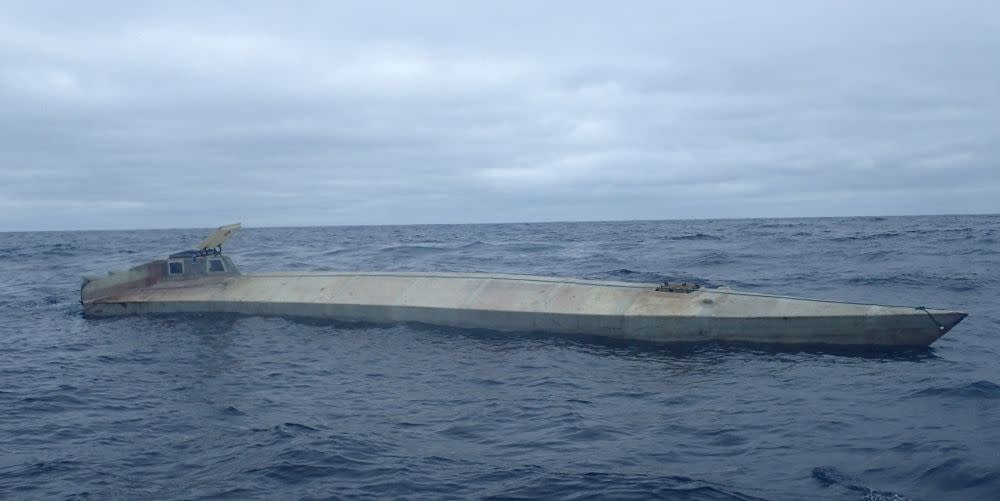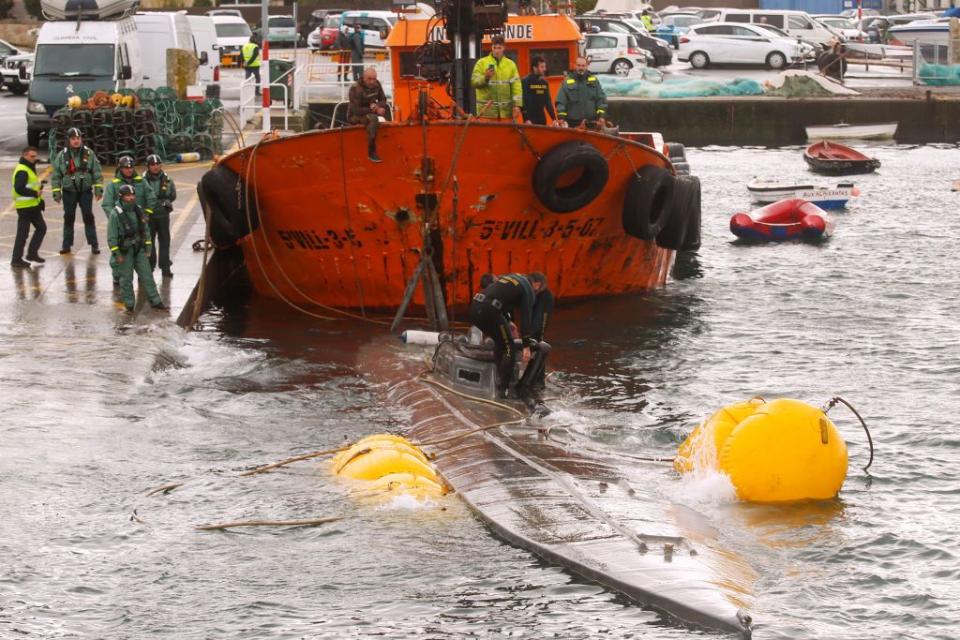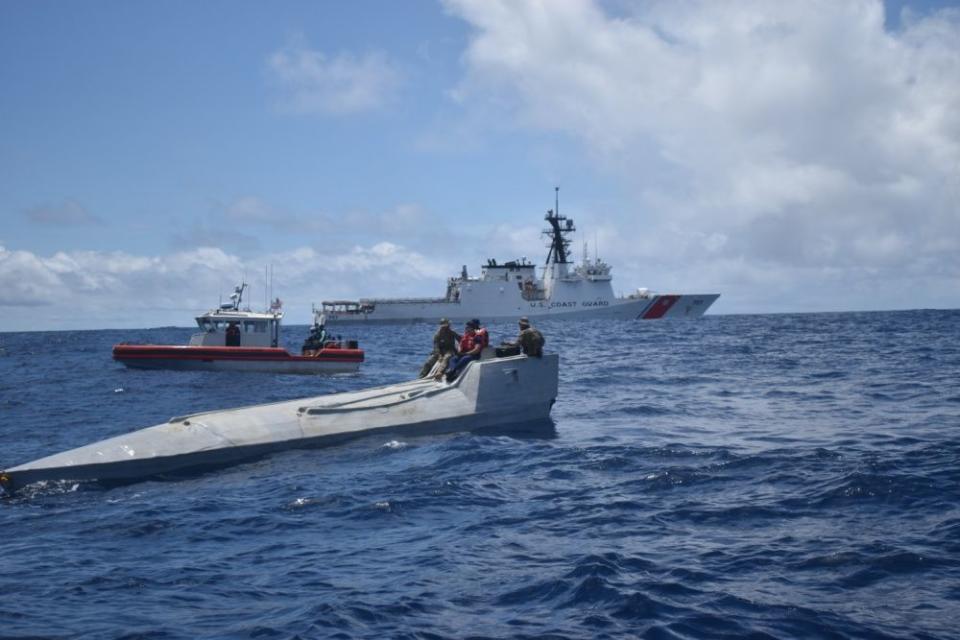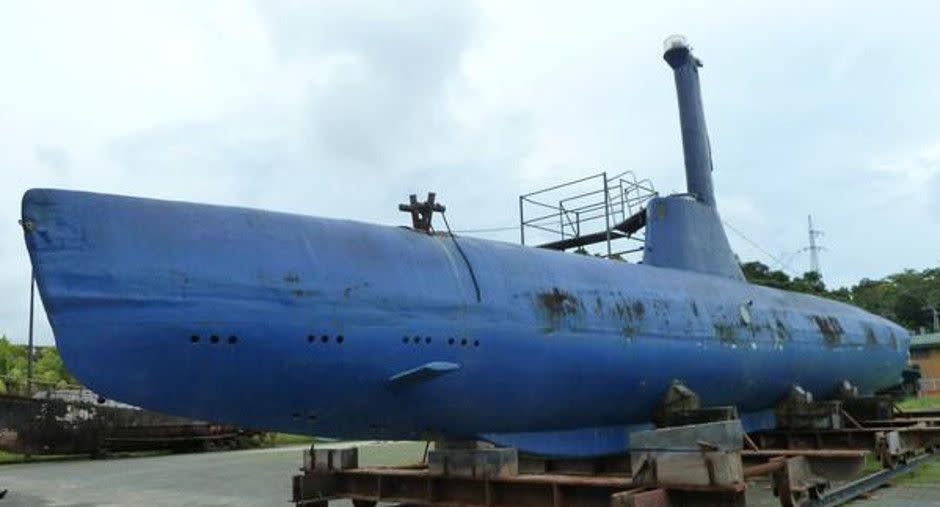Why Our Seas Are Suddenly Swimming With Drug-Running Narcosubs

The number of narcosubs—boats modified to minimize their profile while shuttling drugs, has exploded nearly tenfold in the past decade.
These subs, typically boats designed to ride very low in the water, are now reaching as far as Spain.
Less than fifteen percent of the subs are confiscated by authorities, meaning most of them are successful in reaching their destinations.
The number of so-called “narcosubs” is at an all-time high, with more incidents reported in 2019 than any previous year. The boats, built in the jungles of South America and loaded with drugs, ply dangerous routes across the eastern Pacific, Caribbean, and now the Atlantic Ocean. Low profile and hard to spot, narcosubs allow drug cartels to smuggle large numbers of their goods while evading traditional customs and drug enforcement inspections.
According to undersea warfare expert H.I. Sutton, 36 narcosubs were discovered in 2019, more than twice as many as in 2017. What’s more, the discovery in December 2019 of an abandoned narcosub in Vigo, Spain, confirmed what government officials on both sides of the Atlantic had long suspected: that submarines could now cross the Atlantic Ocean. The distances involved are astounding: the narcosub captured in Spain crossed a distance of 4,400 miles.

Narco submarines detected or otherwise captured in the wild are thought to represent a small fraction of the actual number of boats out there. Sutton, in talking to experts, says those represent just 5 to 15 percent of the number of boats actually in service. By that estimate, in addition to the 36 boats discovered in 2019, there are probably at least another 144 boats still out there, running narcotics.
“Narcosubs” were first encountered by law enforcement in the early 1990s, when Colombian authorities began detecting modified speedboats and low-profile ships. The boats are typically constructed on the Colombian coastline, where they can launch into either the Pacific Ocean or Caribbean Sea. The Pacific route leads into Central America and even Mexico’s west coast, while the Atlantic route also leads into Central America and the Caribbean.

The term “narcosub” is often a misnomer, as the ships are rarely true submarines. Many of the ships are regular boats, heavily modified to remove the superstructure and cover the top of the boat with a waterproof covering. A funnel typically takes in air to allow the conventional boat engine to breathe and to expel exhaust, and more modern ones may feature a radar for navigation purposes. The intent is to build a ship that barely breaks the wavetops, making it difficult to spot at a distance. A low-profile ship is also more difficult to detect via radar.
Real submarines are not completely unknown. The first submarine was captured while under construction in 1995. Another submarine was captured in 2010 on the Colombian-Ecuadoran border. But the most common submersible is the snokel submarine. Snorkel subs are capable of taking on water to submerge the hull entirely, so that only the funnel and radar mast is visible.

Sutton estimates perhaps as many as 800 boats have been built over the past 30 years. Some have been captured, and some likely used once and then retired. Still others might lie on the bottom of the Pacific and Atlantic oceans, their crews the victims of accidents, shoddy construction, or engineering errors. Because when you’re running two tons of cocaine across choppy seas, you can’t exactly call on the Coast Guard when you get into trouble.
The number of narcosubs is growing dramatically, from an estimated eight vessels in 2009 to 180 in 2019. That number will almost certainly rise, as it appears the vast majority reach their destinations.
Source: Forbes and Covert Shores.
You Might Also Like

